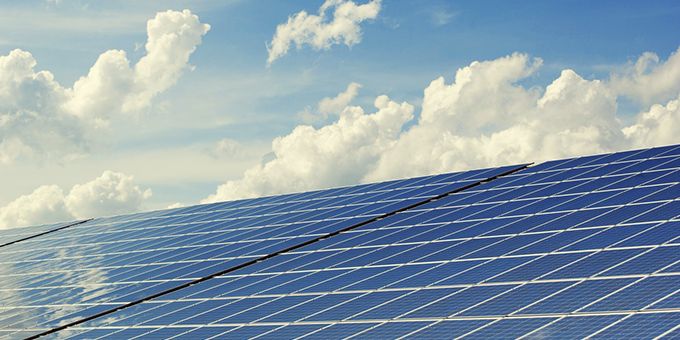Now, researchers have developed a new way of creating solar panels that may make it easier to install than ever before — a crystal-based liquid that has allowed researchers to effectively paint on solar panels to suitable surfaces.
 Crystal Paint for Solar Panels Could Innovate Renewable Energy
Crystal Paint for Solar Panels Could Innovate Renewable Energy

Jenna Tsui, Technology Blogger | The Byte Beat
Renewable energy is more in demand than ever as individuals, concerned about increasing consumption of fossil fuels and the potential impact of on climate change, look for ways to cut back on carbon-producing energy sources.
Now, researchers have developed a new way of creating solar panels that may make it easier to install than ever before — a crystal-based liquid that has allowed researchers to effectively paint on solar panels to suitable surfaces.
Here is everything you need to know about this crystal paint — what it is, how it works and how it may change renewable energy.
How the Solar Paint Works
Traditional silicon-based solar panels use photovoltaic crystals arranged on thin, brittle panels to collect sunlight and convert it into energy.
These panels are typically rigid, limiting transportability and making installation a more involved process. Despite drops in cost over the past few years solar adoption across the US has been slow, leading researchers for look to ways to make solar cheaper and more convenient to install.
One possibility that scientists have investigated have been been silicon-free materials that use alternatives to photovoltaic crystals that can be melted down into a kind of solar paint that can be applied to surfaces to create an instant solar panel.
Now, scientists have identified a few different ways to make solar paint work.
One method, developed by researchers at the National Renewable Energy Laboratory, uses special perovskite crystals to create a liquid equivalent to solar panels that can be sprayed or painted on to just about any suitable surface.
Another method, developed by researchers at the University of Kansas and Beijing Jiaotong University, uses atomically-thin semiconductors coupled with organic materials to similarly form semiconducting crystals as the material dries.
In both cases, once the liquid has fully dried, the crystals allow the surface they were painted on to act similarly to a silicon-based solar panel — collecting sunlight and converting it into usable energy.
Both versions of the solar paint could be used to rapidly add solar power production to a roof or unused wall — or they could be sprayed onto a panel of paper or other thin material material to create a solar panel that can be easily rolled up and moved from place to place.
Challenges Facing Solar Paint
The technology does face a few different challenges, however, that may limit its usability.
In experiments with perovskite-based solar paints, single-layer panels were found to be functional but not very effective. A more advanced form made up of three different layers — a top and bottom layer of solar paint separated by a nanometer-thick dividing layer made up of a polymer that doesn't interact with either the top or bottom layer. These solar panels are closer in efficiency to traditional solar panels, but the additional steps may increase manufacturing costs or make them harder to deploy on-site.
The paint also probably wouldn't be suitable for every surface — speaking with Inverse, one researcher behind the organic-based solar paints ruled out solar panels painted directly on the sides of buildings, for example. Surfaces that are too rough would likely need some kind of intermediate plastic layer between the paint and the surface that could provide a smoother surface.
However, even if its uses are slightly limited, solar paint may still be a valuable alternative to traditional solar systems.
The current solar energy tax credit — which provided subsidies for those wanting to install traditional solar systems — is scheduled to step down in value over the coming years. It may even be phased out entirely by the middle of the decade.
Newly proposed general-purpose renewable tax credits could fill the gap but wouldn't provide the same benefits for traditional solar systems — meaning that more cost-effective solar systems would be bigger beneficiaries. If liquid solar panels could reduce installation costs, they could become a cheaper solar alternative that benefits just as much from new tax credits.
Solar Paint Could Transform Renewable Energy
Researchers, looking for ways to further reduce the cost of installing and manufacturing solar cells, have developed new, liquid solar technology that can be sprayed, rolled out or painted onto surfaces to create a solar cell.
The technology isn't without its challenges — the liquid will only work on suitable surfaces and may require multiple, polymer-separated layers to be effective. However, it may soon become an effective alternative to traditional solar systems, especially if it is cheaper to install.
The content & opinions in this article are the author’s and do not necessarily represent the views of AltEnergyMag
Comments (0)
This post does not have any comments. Be the first to leave a comment below.
Featured Product

